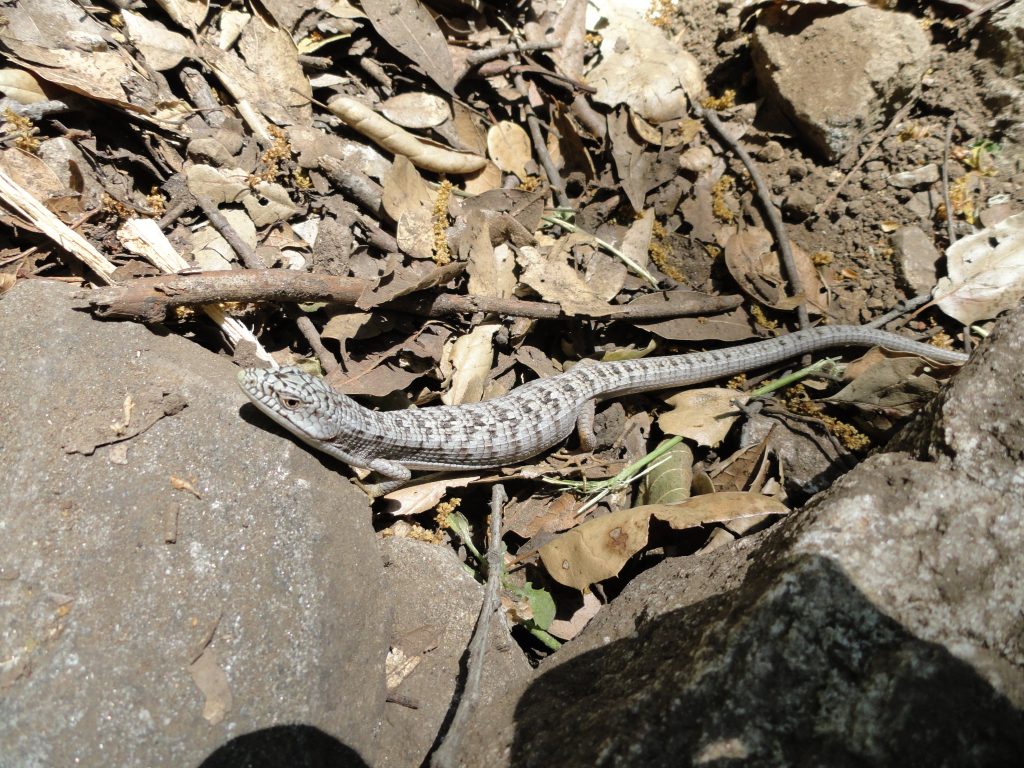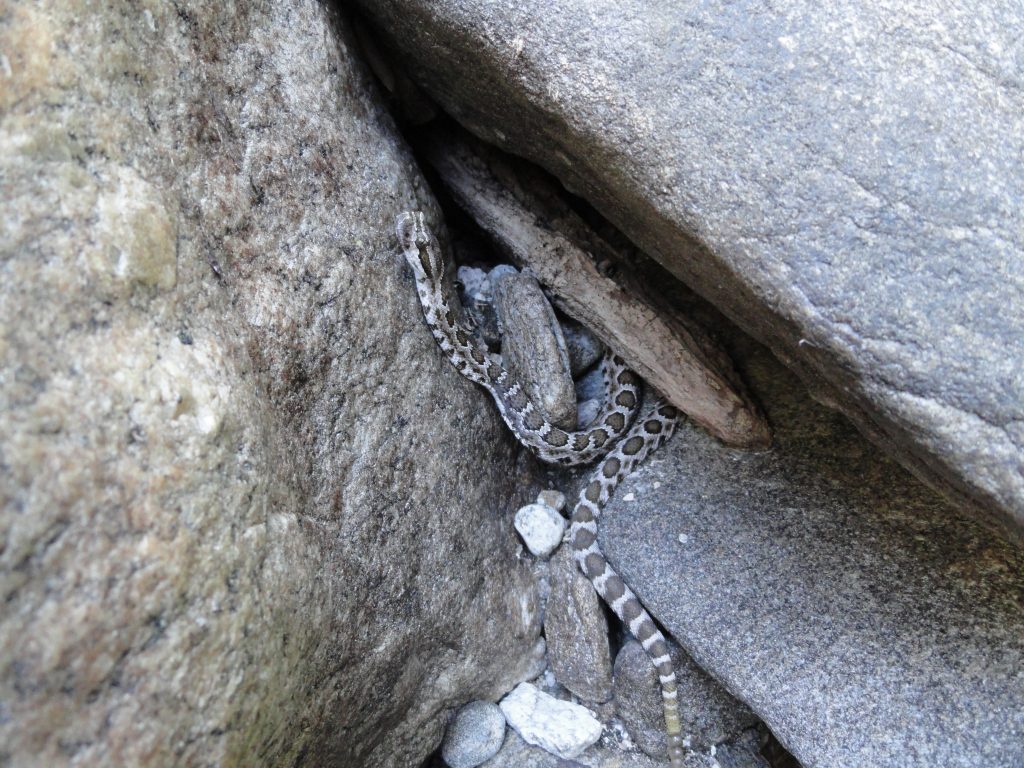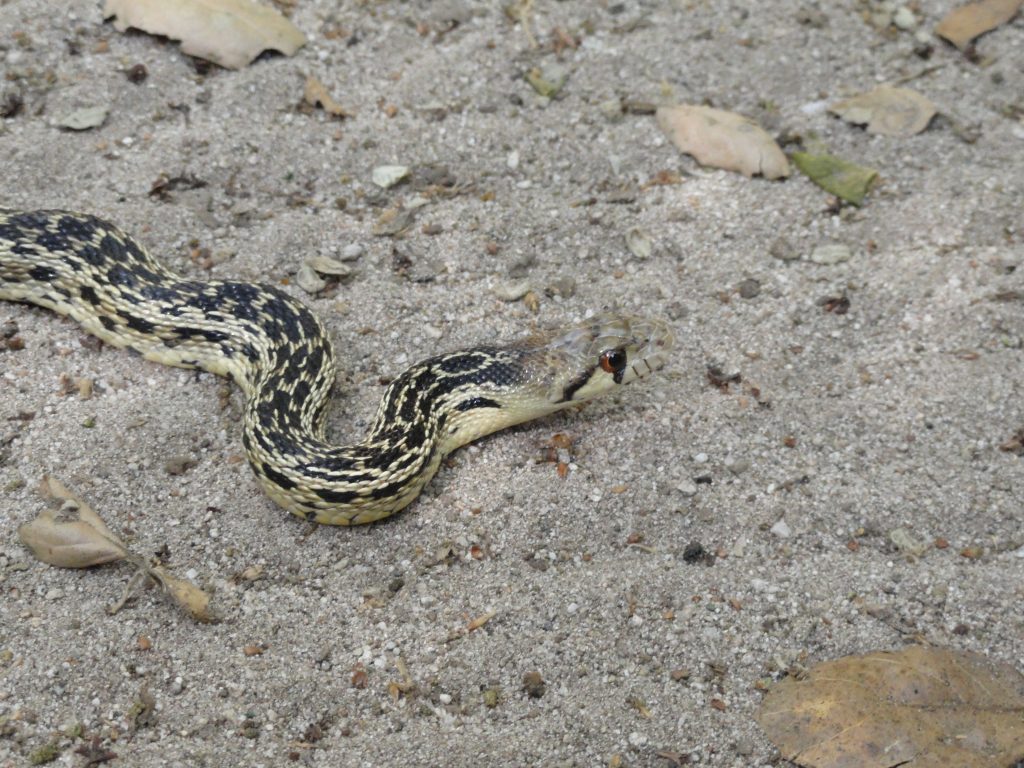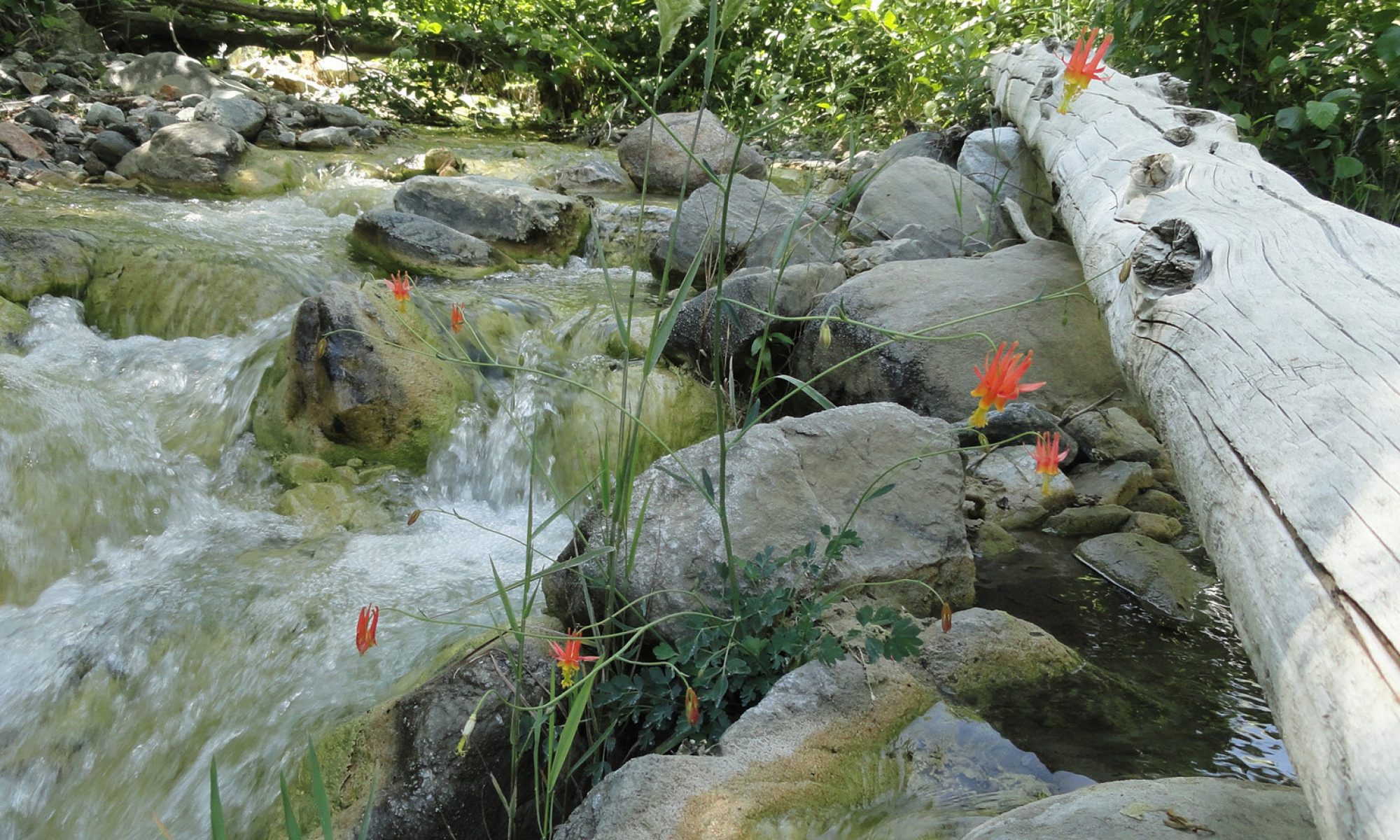

It’s July and summer temps continue to ramp up into the triple digits in the San Gabriel Valley. What a great time to head up into the cooling depths of the Big Santa Anita Canyon! This time of year, it’s often possible to experience temperatures reaching up into the 90′s, especially where you park your car up at Chantry Flats. Out in the open sun it can feel more like a 100 degrees, especially when you’re out hiking up or down the paved fire road between Chantry Flats and Roberts’ Camp. The summer sun not only bears down on you from above, but heat then is re-radiated back up off the pavements and light colored expanses of rock along the mountainside. This is a scene that requires thinking ahead for your next trip out of Chantry Flats. Bring plenty of water for each person. Two liters per person is really not too much when it’s hot. Wear a good sun hat and consider the benefits of applying sunscreen as well.
During the height of the summer sun, the warmest hours are quite often between 12:00 noon and 3:00 p.m. While the sun’s up high, we seek the welcome of shade and so do the reptiles. Of the myriad forms of wildlife to be found in the Big Santa Anita Canyon, it’s the reptiles who are in their season between March and November, with the high point of sightings taking place in late June through August.
Because reptiles cannot regulate their body heat, such as humans can, snakes and lizards are utterly dependent on the temperature of the air. To regulate their internal body temps, snakes and lizards must seek shade during the middle of the day when the sun’s bearing directly down into the canyon. As the sun’s angle shifts later on in the day, these animals will venture back out from their hiding places. During summer evenings, it’s not uncommon to see the occasional snake out on a road surface, which still emits stored heat from the baking day. When traveling back down the Chantry Road on a summer evening, try to slow down so as to avoid running over these defenseless animals. They’re just trying to seek a little warmth against the cooling night. As the morning sun begins to make its’ presence, watch for snakes and lizards sunning themselves out in the open as they attempt to warm back up from the evening’s coolness. This pattern of seeking, avoiding and then seeking heat is an endless pattern in the life of any reptile.
In Big Santa Anita Canyon, most of the species of snakes are non venomous. Our only venomous snake is the Southern Pacific Diamondback. Probably one of the most misunderstood creatures of all times, rattlesnakes are by their very nature shy and secretive, avoiding human contact if at all possible. Rattlesnakes should not be approached or provoked. Their rattling and coiled stance is a defensive behavior. If given the chance, any rattlesnake will eventually retreat and seek to create as much distance between itself and humans as possible! All lizards in the Big Santa Anita are non venomous.
As for snakes and lizards in our canyon, there’s quite a variety. For more images of these amazing animals, go to http://herp-pix.org/As you hike on any of the trails out of Chantry Flats, it’s quite likely you’ll see lizards of all sizes and coloring, flitting alongside rock faces and down sandy stretches of trail. Snakes often tend to be a bit more elusive, yet if you’re quiet and keep a constant watch into the shady hollows under brush, trees and rocks, you might just get to see one. Like all creatures, reptiles have their part to do in the natural landscape. These creatures feed mainly on insects, small amphibians, rodents and occasionally on one another. The hiking trails out of Chantry Flats are a fantastic place to see these wonderful creatures.
